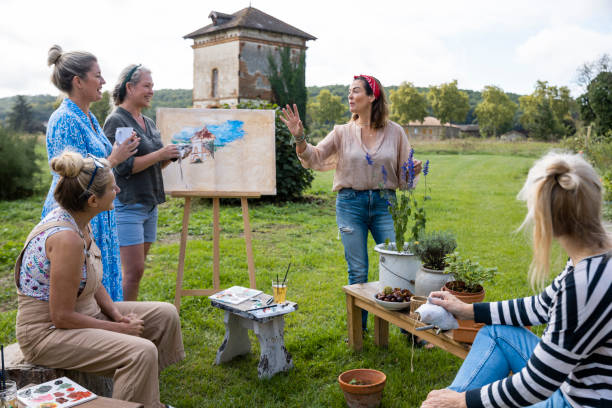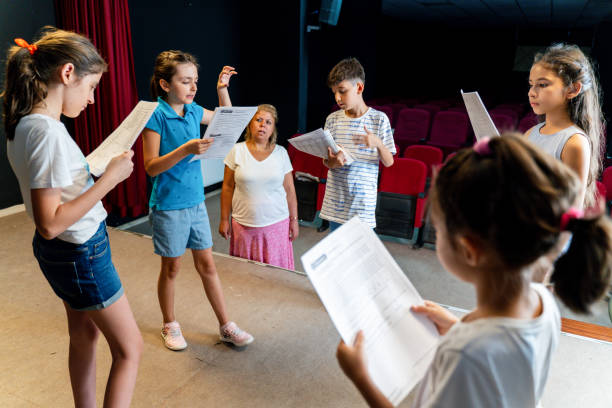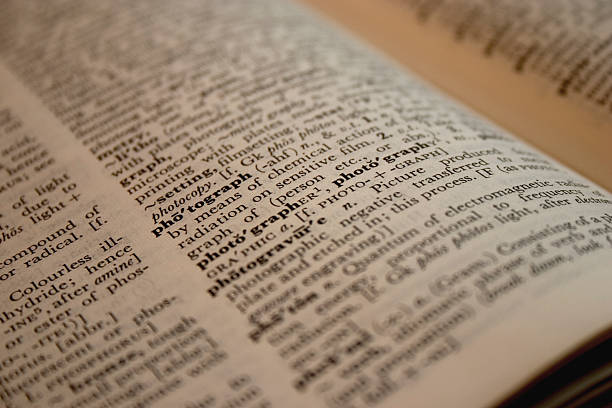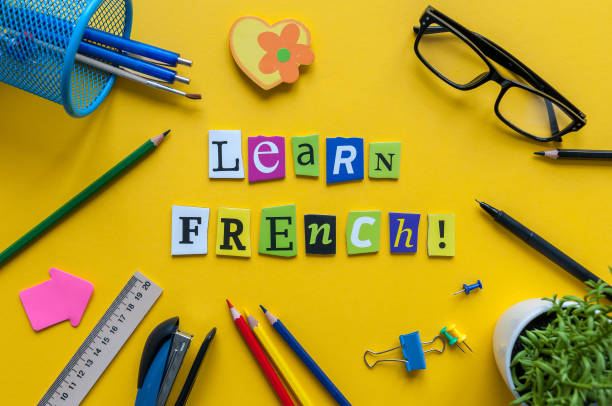How To Improve Writing Dialogue (10 Important Steps)
In the captivating tapestry of storytelling, crafting compelling dialogue serves as the vibrant thread that weaves together the fabric of characters, plot, and emotion.
However, mastering the art of dialogue construction is no small feat—it requires finesse, a keen understanding of human communication, and the ability to breathe life into fictional voices.
This journey of improvement is a dynamic quest, one that delves into the subtleties of language, explores the nuances of character expression, and embraces the ever-evolving nature of storytelling.
In this exploration, we embark on a guided odyssey, dissecting the intricacies of dialogue from various angles—from the fundamentals to the advanced techniques.
Welcome to the realm of improving dialogue, where words become a symphony, characters find their voices, and storytelling transforms into an immersive experience.
Let’s unravel the secrets, master the techniques, and embark on a transformative voyage to elevate the spoken word to an art form.
How To Improve Writing Dialogue
Certainly! Here’s a step-by-step process to improve writing dialogue:
Observe Real Conversations
Pay close attention to how people talk in everyday life. Listen to the rhythm, pacing, and natural flow of conversations. This will help you capture authentic dialogue in your writing.
Understand Character Voices
Each character should have a distinct voice. Consider their background, personality, and experiences. Tailor the dialogue to reflect these aspects, ensuring that each character’s speech is unique.
Use Contractions and Natural Language
People generally use contractions and informal language in everyday speech. Avoid overly formal dialogue unless it suits a specific character or context. Keep it natural and relatable.
Show, Don’t Tell
Instead of directly stating information, use dialogue to reveal character traits, emotions, and plot details indirectly. Show the readers through the characters’ words and actions.
Use Subtext
Dialogue doesn’t always have to explicitly convey information. Incorporate subtext to add depth and layers to your characters’ interactions. What characters don’t say can be as important as what they do say.
Pay Attention to Pacing
Dialogue should have a rhythm that matches the tone and pace of the scene. Vary sentence lengths and use pauses to create a natural flow. Consider the overall pacing of your story and adjust dialogue accordingly.
Edit and Refine
After writing a dialogue scene, revisit it during the editing process. Trim unnecessary words, ensure clarity, and refine the language. Tightening up dialogue can make it more impactful.
Read Aloud
Reading your dialogue aloud can help you identify awkward phrasing, unnatural speech patterns, and areas that may need improvement. If it sounds natural when spoken, it’s more likely to read well on the page.
Use Dialogue Tags Wisely
While dialogue tags like “said” and “asked” are essential for clarity, avoid overusing them. Instead, use action beats and character descriptions to attribute dialogue, adding variety to your writing.
Seek Feedback
Share your dialogue with beta readers or writing groups. Constructive feedback can provide valuable insights and help you refine your skills. Consider the perspectives of others to ensure your dialogue resonates with a broader audience.
Remember, improving dialogue is an ongoing process. Continuously observe, practice, and refine your writing to create engaging and authentic conversations in your stories.
Understanding the Fundamentals
Unlocking the art of compelling dialogue is akin to discovering the secret passages of a literary labyrinth. At its core, understanding the fundamentals is the enchanted key that opens doors to realms where characters breathe life, and stories pulse with authenticity.
It’s not merely about words spoken; it’s the alchemy of crafting conversations that dance with purpose and emotion.
Imagine dialogue as the heartbeat of your narrative, each word a pulse that propels the story forward. In this enchanting journey, we delve deep into the heart of storytelling, unraveling the mystical threads that bind dialogue to the very soul of your characters and plot.
Prepare to embark on a quest where the fundamentals are not just stepping stones but the very stars guiding you through the celestial tapestry of engaging and transformative dialogue.
Definition of dialogue and its role in storytelling
Dialogue, the literary heartbeat that resonates within the written word, is the dynamic interplay of voices that transforms a narrative from mere words on a page into a living, breathing tapestry of human experience.
It is the artful conversation that unfolds between characters, a symphony of spoken words that transcends the boundaries of ink and paper.
Beyond the mere exchange of sentences, dialogue is the conduit through which emotions flow, personalities clash, and relationships evolve.
It is the subtle dance of nuances, revealing the depths of character motivations, fears, and desires. In the grand theater of storytelling, dialogue is the actor’s soliloquy, the whispered confession, and the thunderous clash of conflicting ideologies—all converging to propel the plot forward.
It is, in essence, the secret language that binds readers to the soul of the narrative, making them active participants in the unfolding drama.
Importance of realistic and engaging dialogue
The importance of realistic and engaging dialogue in storytelling cannot be overstated; it is the lifeblood that courses through the veins of any compelling narrative.
Authentic dialogue serves as the bridge between the fictional realm and the reader’s lived experiences, creating a connection that transcends the page.
Realistic dialogue not only breathes vitality into characters but also mirrors the diverse cadence of human speech, allowing readers to immerse themselves in the narrative as if eavesdropping on genuine conversations.
Engaging dialogue is the catalyst for emotional resonance, enabling readers to feel the heartbeat of characters, empathize with their struggles, and celebrate their triumphs.
It becomes a vehicle for conveying subtleties, injecting humor, and fostering a sense of intimacy that makes the story unforgettable.
In essence, the craft of realistic and engaging dialogue transforms storytelling from a passive experience into a vibrant, interactive journey where readers become co-creators of the narrative tapestry.
Studying Dialogue in Literature and Film
Embarking on a voyage through the corridors of dialogue in literature and film is akin to entering a kaleidoscopic realm where words and scenes intertwine in a mesmerizing dance.
Like a literary detective, we dissect the brilliant exchanges between characters in classic novels, unearthing the hidden gems that give life to the narrative.
Simultaneously, we sit in the director’s chair, scrutinizing the silver screen for those cinematic dialogic masterpieces that echo in the corridors of our minds.
It’s not a mere study; it’s a thrilling exploration of the alchemy that transforms spoken words into a symphony of emotions and tension.
From the pages of timeless literature to the frames of iconic films, we decode the language of dialogue—a lexicon of whispers, confrontations, and confessions that propels storytelling to an art form that transcends time and medium.
Buckle up for a journey where the pen meets the lens, and dialogue emerges as the unsung hero in the grand narrative of human expression.
Analyzing exemplary dialogues from classic and contemporary literature
In the hallowed halls of literature, analyzing exemplary dialogues from both the classic and contemporary realms is akin to embarking on a time-traveling odyssey through the echoes of human expression.
We traverse the dense, poetic conversations of Shakespearean dramas, where every line is a carefully woven sonnet that unravels the complexities of the human psyche.
Simultaneously, we navigate the raw, unfiltered dialogue of modern masterpieces, where authors wield words like modern-day sorcerers, conjuring realities both familiar and fantastical.
Through the looking glass of these dialogues, we uncover the evolution of language, witnessing the ebb and flow of societal nuances, cultural shifts, and timeless truths.
It’s not just a literary analysis; it’s a linguistic excavation, a journey that unveils the threads connecting the centuries, reminding us that the art of dialogue is an eternal dance—one that resonates through the ages and shapes the very essence of storytelling.
Crafting Authentic Characters through Dialogue
Crafting authentic characters through dialogue is akin to sculpting with words, molding literary clay into figures that breathe and speak.
In this linguistic alchemy, characters cease to be ink on paper; they become living entities, with voices that resonate beyond the margins of the page. It’s not merely about the spoken word; it’s about the heartbeat that reverberates through each syllable, revealing the quirks, fears, and dreams that define a character’s essence.
Through dialogue, characters shed the cloak of fictional constructs, donning the vibrant hues of genuine personalities.
This is where the writer becomes a linguistic architect, constructing dialogues that are not just conversations but windows into the soul.
It’s a delicate dance between revelation and concealment, where every word is a brushstroke painting the intricate portrait of a character’s identity.
Prepare to embark on a journey where dialogue is not a tool but a magic wand, summoning characters into existence with every carefully chosen word.
Establishing individual voices for characters
In the symphony of storytelling, establishing individual voices for characters is the maestro’s stroke that transforms a cacophony of words into a harmonious composition. Each character is not merely a puppet of the plot; they are distinct personas with their own lexicon, cadence, and linguistic fingerprint.
Crafting individual voices transcends the boundaries of mere dialogue; it is an art of nuance, where the timbre of a character’s speech resonates with their unique background, personality, and experiences.
Whether it’s the eloquent prose of an erudite scholar or the colloquial banter of a street-savvy protagonist, the words spoken by each character become the melody that distinguishes them in the reader’s mind.
It’s a literary tightrope walk, where the challenge lies not only in what is said but in how it is said—an intricate dance that transforms characters from words on paper to living, breathing entities with voices that linger long after the final chapter has closed.
Mastering Dialogue Punctuation and Formatting
Mastering dialogue punctuation and formatting is the meticulous choreography that transforms a script from a mere literary ballet into a dazzling, well-rehearsed Broadway performance.
It’s the unseen conductor’s hand, guiding each comma, quotation mark, and em dash to perform in perfect synchrony, creating a symphony of clarity for the reader’s mind.
Imagine punctuation as the silent but crucial actors on stage, lending rhythm and precision to the spoken words.
It’s not just about the rules and guidelines; it’s a dance of finesse that turns a potential jumble of words into a well-orchestrated dialogue.
The subtle ballet of formatting becomes the set design, framing the characters’ interactions with the grace of white space and indents.
In this literary theatre, mastering the nuances of punctuation and formatting is not a chore; it’s the art of enhancing the dialogue’s resonance, ensuring that every line resonates like a perfectly tuned instrument in the grand symphony of storytelling.
In-depth guide to punctuation rules in dialogue
Navigating the intricacies of dialogue punctuation is akin to embarking on a thrilling literary expedition, where every punctuation mark is a guidepost illuminating the path to clear and resonant communication.
An in-depth guide to punctuation rules in dialogue is the compass that steers writers through the maze of quotation marks, commas, and dashes, ensuring that each element plays a harmonious role in the symphony of spoken words.
From the subtle dance of dialogue tags to the strategic placement of periods and commas, this guide transforms the seemingly mundane marks on the page into powerful tools for conveying rhythm, tone, and meaning.
It’s not merely a handbook; it’s a treasure map unlocking the secrets to punctuating dialogue with finesse, ensuring that every interaction among characters is not just heard but orchestrated with precision and clarity.
In this literary realm, punctuation is not a set of rules but a language in itself, and mastering it elevates dialogue from mere conversation to a nuanced and impactful exchange.
Creating Dynamic Dialogue Scenes
Creating dynamic dialogue scenes is like orchestrating a riveting play where every spoken word is a note that reverberates through the stage of storytelling.
Picture it as a cinematic dance, where characters engage in a choreography of words that spark, sizzle, and resonate with purpose. It’s not just about what is said; it’s about the charged pauses, the heated silences, and the verbal duels that unfold like scripted battles.
Dynamic dialogue scenes are the pulse of a narrative, beating with tension, conflict, and revelation. It’s the playwright’s pen that wields power, crafting exchanges that grip readers by the imagination and refuse to let go.
Imagine a dialogue scene not as mere conversation but as a live wire sparking with electricity, a literary spectacle that transforms words into an immersive experience, leaving readers on the edge of their seats, eager for the next dramatic turn of phrase.
In this vibrant theater of words, creating dynamic dialogue scenes is not just an art; it’s the magic that turns storytelling into a mesmerizing performance.
Setting the stage for compelling dialogue scenes
Setting the stage for compelling dialogue scenes is akin to the delicate art of arranging a theatrical masterpiece.
The scene is not merely a backdrop but a living canvas upon which characters paint their conversations. Imagine a carefully curated setting—a dimly lit cafe, a bustling city square, or a secluded moonlit garden—each locale whispering its own stories to complement the dialogue.
The ambiance becomes a silent actor, influencing the ebb and flow of words. Weather, time of day, and surrounding details breathe life into the dialogue, creating an immersive experience for readers.
It’s about more than just physical surroundings; it’s the subtle cues—the tightening of fists, the flicker of an eye—that punctuate spoken words, transforming them into a dynamic dance on the narrative stage.
In the symphony of storytelling, setting the stage for compelling dialogue scenes is the overture that captivates readers, inviting them into a world where every word is a brushstroke on the canvas of a vivid and unforgettable story.
Polishing and Editing Dialogue
Polishing and editing dialogue is the literary equivalent of refining a brilliant gem, meticulously cutting away imperfections to reveal a dazzling, multifaceted jewel.
It’s not a mere act of correction; it’s a transformative process that breathes life into characters’ conversations, ensuring each word gleams with purpose and resonance.
Think of it as a dialogue spa day, where the words luxuriate in the soothing waters of precision and clarity. Every edit is a brushstroke, a tweak that elevates dialogue from good to exceptional.
It’s about maintaining the rhythm, purging redundancies, and fine-tuning the nuances that make words hum like a finely tuned instrument.
Polishing and editing dialogue is the final, crucial act of a narrative alchemist, turning raw conversations into polished pearls that readers will savor long after the last page has been turned.
It’s a transformative journey that takes dialogue from the rough draft to the red carpet, ensuring that every spoken word sparkles with the brilliance of a literary masterpiece.
Importance of self-editing for dialogue improvement
The importance of self-editing for dialogue improvement is the beacon that guides writers through the labyrinth of their own words, urging them to play the dual role of creator and critic.
It’s a transformative act that empowers writers to step back, scrutinize, and refine their dialogue with a discerning eye. Self-editing becomes the mirror reflecting the true essence of characters’ voices, allowing writers to trim excess, enhance clarity, and distill conversations to their purest form.
It’s not just about catching typos or grammatical slip-ups; it’s about honing the subtleties that make dialogue memorable and authentic.
Embracing self-editing for dialogue is akin to being both the architect and the demolisher, dismantling what doesn’t serve the narrative while preserving the jewels that elevate the spoken words.
It’s a crucial act of literary craftsmanship that turns the raw potential of dialogue into a finely polished facet, ensuring that every word contributes harmoniously to the symphony of storytelling.
Seeking feedback from peers or writing groups
Seeking feedback from peers or writing groups is akin to opening a window to let fresh air into the creative space. It transforms the solitary act of writing into a collaborative endeavor, where diverse perspectives become the compass guiding improvement.
These fellow writers act as literary comrades, navigating the twists and turns of your narrative terrain. Their insights, critiques, and praises become the compass and the balm, steering your work toward clarity and resonance.
In the crucible of shared creativity, the echoes of others’ thoughts refine and fortify your own. It’s not just about validation; it’s about the collective alchemy that turns a good piece into a great one.
The process of seeking feedback is an investment in the evolution of your work, a testament to the idea that every word can benefit from the communal chorus of fellow storytellers.
Practicing Dialogue Exercises
Practicing dialogue exercises is the writer’s equivalent of a linguistic gym, a place where words lift weights and sentences do calisthenics to flex their narrative muscles.
It’s not just a drill; it’s a dynamic workout that stretches the imagination and strengthens the sinews of storytelling. Picture it as a sparring session between characters, a verbal dance where every exchange is a chance to refine the art of conversation.
These exercises are the literary obstacle course where dialogue hurdles over clichés, somersaults past predictability, and sprints toward authenticity.
It’s not just about perfecting the routine; it’s about embracing the unexpected, letting characters surprise the author as much as the reader.
In this writer’s dojo, dialogue exercises are not just repetitions; they are the rituals that transform words into warriors, ready to engage and captivate in the grand arena of storytelling.
Interactive exercises to enhance dialogue-writing skills
Interactive exercises designed to enhance dialogue-writing skills are the playgrounds where words come out to play, engaging in a dynamic dance that transforms the art of conversation into a skillful sport.
These exercises are not mere drills but vibrant workshops where writers stretch their creative muscles, experimenting with the ebb and flow of spoken language.
Picture it as a dialogue obstacle course, where characters navigate twists and turns, hurdles of emotion, and tightropes of tension.
It’s not just about mastering the rules; it’s about discovering the nuances that make dialogue resonate authentically.
These interactive exercises are the creative laboratories where trial and error meet innovation, ensuring that the dialogue crafted is not only purposeful but also captivating.
In this interactive realm, writers become both architects and players, sculpting conversations that don’t just tell a story but invite readers to join in the narrative dance.
Utilizing Technology to Enhance Dialogue
In the symphony of storytelling, utilizing technology to enhance dialogue is like adding a futuristic instrument to an age-old orchestra.
It’s not about replacing the human touch but about conducting a harmonious collaboration between creativity and innovation. Imagine a high-tech sculptor’s studio, where AI chisels away the unnecessary, leaving behind dialogue that is both refined and resonant.
Technology becomes the silent co-author, suggesting turns of phrase, detecting tonal nuances, and offering a digital mirror to reflect the impact of every spoken word.
It’s not just a tool; it’s a literary cyborg, infusing the creative process with the precision of algorithms and the intuition of the human mind.
In this brave new world, writers embrace technology not as a threat to tradition but as a companion in the quest for dialogue that transcends the boundaries of the written word, propelling storytelling into an era where innovation and imagination dance hand in hand.
Writing tools and software that aid in dialogue construction
In the modern writer’s arsenal, specialized writing tools and software stand as virtual companions, offering a symphony of features to aid in the delicate art of dialogue construction.
Imagine these tools as a high-tech dialogue workshop, where algorithms and user-friendly interfaces coalesce to streamline the creative process.
From grammar checkers that ensure punctuation precision to AI-driven content analyzers that scrutinize the emotional resonance of spoken words, these software gems act as discerning mentors in the journey of crafting engaging dialogue.
With the click of a button, writers can access dictionaries, thesauruses, and even tone analyzers, refining each sentence until it hums with authenticity.
These digital sidekicks not only assist in polishing language but also empower writers to experiment with structure, rhythm, and tone, pushing the boundaries of conventional conversation.
In the realm of dialogue construction, these tools serve not as replacements for creativity but as dynamic collaborators, enhancing the writer’s craft and elevating storytelling to new technological heights.
Learning from Dialogue Workshops and Courses
Embarking on dialogue workshops and courses is akin to entering a secret society of linguistic architects, where the alchemy of conversation is demystified and transformed into an art form.
These workshops are not mere classrooms; they are crucibles where words are forged and honed, and the delicate dance of dialogue is dissected under the keen eye of seasoned mentors.
Picture it as a literary dojo, where writers gather to spar with words, refining their skills through the collective wisdom of fellow wordsmiths.
In this hallowed space, participants don’t just learn the rules of engagement; they navigate the uncharted territories of authentic expression, uncovering the nuances that breathe life into characters.
These courses are not just lessons; they are voyages into the heart of storytelling, where the symphony of voices harmonizes to compose narratives that resonate long after the final lesson has concluded.
Overview of available writing workshops and courses focused on dialogue
Embarking on the journey of honing dialogue skills involves navigating a rich landscape of writing workshops and courses that serve as beacons illuminating the path toward mastery.
This is not a mere overview; it’s an exploration of literary treasure troves where the secrets of compelling conversation are unlocked.
From online platforms teeming with interactive modules to in-person workshops conducted by seasoned wordsmiths, the options are as diverse as the characters within a well-crafted dialogue.
These courses offer a smorgasbord of learning experiences, from dissecting classic dialogues to engaging in hands-on exercises that sharpen the craft.
Whether novices seeking foundational knowledge or seasoned writers aiming to refine their skills, the spectrum of available workshops and courses is a vast and welcoming tapestry, inviting all storytellers to immerse themselves in the captivating realm of dialogue construction.
Frequently Asked Questions about How To Improve Writing Dialogue
How can I make my characters’ dialogue more authentic and relatable?
To infuse authenticity into your characters’ dialogue, observe real conversations, understand your characters’ backgrounds, and use natural language, including contractions. Ensure each character has a distinct voice based on their personality and experiences.
What techniques can I use to reveal character traits and emotions through dialogue?
Instead of explicitly stating information, employ the “show, don’t tell” principle. Use dialogue to indirectly convey character traits and emotions. Incorporate subtext to add depth, allowing readers to infer meaning beyond the literal words spoken.
How do I maintain a natural flow and pacing in dialogue scenes?
Pay attention to the rhythm of real conversations and mirror it in your writing. Vary sentence lengths, use pauses strategically, and consider the overall pacing of the scene. Reading your dialogue aloud can also help ensure a natural and engaging flow.
What role do dialogue tags play, and how can I use them effectively?
Dialogue tags like “said” and “asked” are essential for clarity, but avoid overusing them. Experiment with action beats and character descriptions to attribute dialogue, adding variety to your writing and avoiding repetitive tags.
How can I make my dialogue more concise and impactful during the editing process?
During editing, focus on trimming unnecessary words, ensuring clarity, and refining language. Tighten up dialogue to make it more impactful. Consider whether each line contributes to character development, plot, or the overall tone of the scene.
What are some tips for creating distinct voices for each of my characters?
Consider your characters’ backgrounds, personalities, and experiences. Tailor their speech patterns to reflect these elements, making each character’s voice unique. Pay attention to vocabulary, tone, and preferred expressions to differentiate characters effectively.
How can I add depth to dialogue by incorporating subtext?
Think about what your characters are not saying. Use subtle cues, unspoken tensions, and underlying emotions to create subtext in your dialogue. This adds complexity and depth, making conversations more nuanced and engaging.
Is it advisable to use formal or informal language in dialogue, and how do I decide?
In general, use informal language, including contractions, to mimic natural speech. However, consider the context and your characters. Some situations or characters may warrant a more formal tone. Strive for a balance that aligns with the overall atmosphere of your story.
Can you provide examples of effective dialogue that reveals character traits without direct exposition?
Certainly! Instead of stating, “John is impatient,” show it through dialogue. For instance, have John interrupt others frequently, finish their sentences, or display frustration during delays. Let the readers infer impatience through his actions and speech.
How can I ensure my dialogue resonates with a diverse audience?
Seek feedback from beta readers or writing groups with diverse perspectives. Consider cultural nuances and avoid stereotypes. Aim for universal themes and emotions in your dialogue to make it relatable to a broad audience.
Conclusion
In conclusion, enhancing the quality of dialogue in your writing is a nuanced and rewarding process. By drawing inspiration from real-life conversations, crafting distinct voices for each character, and employing techniques such as subtext and “show, don’t tell,” you can create dialogue that is not only authentic but also engaging for your readers.
Pacing, language choice, and the judicious use of dialogue tags all play crucial roles in maintaining a natural flow.
The iterative nature of writing dialogue requires a commitment to observation, refinement, and seeking constructive feedback.
Ultimately, the art of improving dialogue lies in the delicate balance between realism and narrative purpose, allowing characters to speak in ways that resonate with readers and bring your stories to life.









